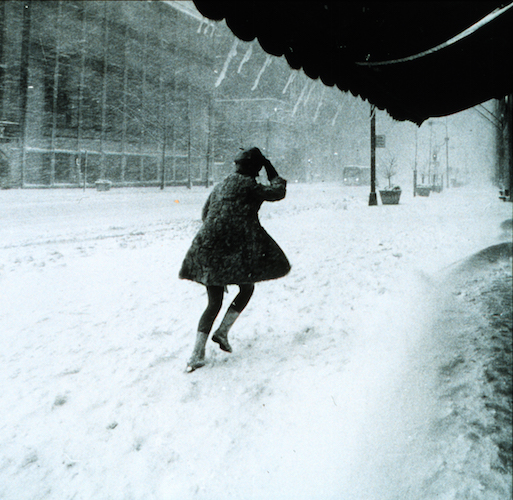Last night was a stormy night in my area.
The air was heavy with humidity and there was tangible electricity in the air. There were weather alerts on the television and radio that informed of multiple groundings of tornadoes while the weather woman warned in her intentionally calm voice for those in the tornado’s paths to seek shelter immediately.
As I watched the storm cells do their little dance across the radar I was reminded of the tendency for these tornadoes to form at the back end of the storm cells. Winds howl, rains pour, and the conflicting types of energy crash into each other to produce flashes of lightning and thunder that has the potential to rattle even the most emotionally stable of adults.
But it’s typically not until most of this has passed, when the storm is almost over, that the tornadoes appear, ominously threatening their subversive upheaval to everything that we have built that we had thought was so stable.
Never before in my life have I been aware of having dreams that repeated themselves, but I do remember having dreams of tornadoes over and over during my marriage. The marriage was dark, both our energies and our egos could not have conflicted more than they did as they crashed into each other over and over the entire time.
It was truly a five-year storm that did not prepare either of us though for the whirling path of destruction that turned out to be the divorce itself.
Tornadoes have the ability to rip people from their homes, to blaze a path across our lives that at the time, seems irreparable.
And while some marriages end in peaceful, amicable divorce, this unfortunately is not the case for too many of us.
But it was during this time that my inner warning system guided me to take shelter—in myself.
I sought solace in going inward, listening, being with it all and rather desperately tethering to what I knew about myself to be true in an effort to not suppress, avoid or be torn in other ways from the experience. I took long walks, practiced yoga, meditation, had long conversations with friends and teachers that I could trust to hold me to a high standard and consistently asked myself questions such as, “Who am I, really, and who do I want to be in all of this?”
Inquiring within around these areas supported me greatly in making it my practice to resist temptations to take any action, specifically toward my partner, that stemmed from pain, anger, or even the temptation to be vindictive.
I learned to respond, not to react. Taking a few breaths even before speaking during a conversation, or waiting a few hours before responding to an email became some of my main tools.
I am not claiming to have been perfect during this process, but I can honestly say that the challenge of learning to be intentional and having developed awareness around my emotions during this highly emotional time helped me greatly in maintaining as much of my integrity as I could.
Even though these storms can be dark and can bring us to our knees, the darkness can teach us. Sometimes our refusing to be afraid of the dark—intentionally choosing to find a receptive peace and stillness, and to really look at our selves, is the simplest way to see the light in our lives.
Just as a seed needs the darkness of the soil to grow, we too can find nourishment in the darkest of times.
One of the first lessons that my storm taught me was to love myself. Without this self-love and intentional nourishment, progress to learn further would not have been possible. I took time to feed myself—of course with healthy foods, but also with other things that I enjoyed before the marriage. I spent time with friends, I started writing again, and I rediscovered my love of music and many other things—which essentially assisted in my rediscovering of myself, which somehow I had lost.
I can honestly say that my self-love previous to and during my marriage had been lacking, and while having some grace for myself I took a long, difficult look at how this lack of self-love had affected the dynamic.
If we don’t truly love ourselves, there is no amount of love that we can get from anyone else that can ever make up for this—even if they are fully on top of their game in this area. This is just the hard reality of the situation.
Maybe if you are like me, you feel that you have heard this suggestion so many times that it has perhaps lost some of its luster, but it is through this self-love and self-care that we can begin to heal.
Once we truly connect with ourselves, we can then see the situation for what it was and is. We can see our role in the dynamic, and there always is a part that we played.
I fought at times to be right and I dug in my heels and held my ground in what turned out to be nothing more nor less than a perpetual power struggle.
When we love ourselves and have grace for ourselves it is much easier to choose to see our roles in the dynamic not for reasons of blame or shame, but rather in an effort to shed light on the pain from which our actions or words stemmed in the first place—in order for healing and to prevent the patterns from continuing in future relationships.
This will take time, and time frames will vary greatly from person to person as will the lessons and clarity that will surface for each of us when our skies clear.
For me, the biggest take-away from my storm was my learning to allow.
Our potential for real, life changing growth is contingent on this ability.
We allow, we do not force.
This does not mean that we exist in a perpetual state of either apathy or ignorance, nor do we condone actions of others that stem from a place of pain or fear. Rather, we allow both ourselves as well as others to be where we are at within our respective processes. Again, we respond not react, in appropriate ways, but with grace, understanding, and (ideally) love.
A teacher of mine once told me that all of our actions can somehow be traced back to either being from a place of giving love, or needing love. I see our marriage and our conflict as both of us having needed love in those moments, and had we perhaps independently had the “self-love” component of this down, we would not have relied on each other for love in what manifested as a codependent dynamic.
Once we learn this in one relationship, it can easily be transferred to every other interaction that we have. That woman who cuts you off in traffic, the friend who consistently cancels plans at the last minute, perhaps a parent or a child even who does not live up to unfair, projected expectations. We are all just doing what we are capable, in any given moment, with our respective amounts of tools and levels of wisdom which we have accumulated along the way.
We allow them and we send them love.
And when it is all over, we sit amongst the wreckage, staring up at what now may be clear, baby blue skies, surrounded by air that smells new and purified.
We feel reverence for what was and what is and with a deep, expansive inhale we prepare to rebuild—only now with our new wisdom and understanding, we move forward ready to build something even more beautiful and stable than what stood before.
~
~
Relephant:
How to Get Divorced like a Grown Up.
~
Author: Katie Vessel
Editor: Travis May
Photo: Wikimedia







Read 0 comments and reply